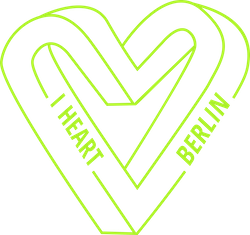photo: speedpropertybuyers.co.uk / CC
Graffitis are a poetic creation of the streets and with this in mind I invite you to take a closer look at your surroundings; maybe there’s a hidden message waiting to be discovered or an image to be admired.
Although subjective, when we think of graffiti and street art, we often come to think of abstractness, disorganization, aesthetics, movement, freedom and creativity and whether to make us laugh or to incite us to riot, the colorful scribbles, which tend to be innovative and original, are the guiding thread that leads to self-expression while stimulating body and mind. However, it’s not only about the aesthetics since their most important feature is actually connected with the reactions they get; in other words, it has to do with provocation. And Art needs provocation, often associated with originality, to be consequently educational – Art does not rest exclusively on moralizing concepts, but it is above all a container of criticism and reflection. And Berlin, as a magnet drawing artists from all over the world, is the perfect example to illustrate the concept of “provocative Art”.
photo: abstrkt.ch / CC
Considered the “graffiti Mecca of the urban art world”, Berlin has a strong culture when it comes to visual street art, with the East Side Gallery being one of the best examples to illustrate how graffiti can be interpreted as a striking form of protest. Featuring 105 paintings by artists from all over the world, the lively gallery is not only visually stunning but also portrays the rebellion against years of tyranny, transforming the oppressing mural into an authentic vehicle that expresses the desired political change and personal freedom.
Perhaps one of the most well-known examples is the “Brother Kiss” (originally named “My God Help Me To Survive This Deadly Love”), a painting by artist Dmitry Vrubel made in 1990, that is particularly remarkable – based on a photograph of Leonid Breshnev and Erich Honecker locking lips to honor the 30th anniversary of the GDR in 1979, the artist expressed his fear towards the communist regime. Although heavily criticized, the painting has become a landmark by leaving a permanent historical stamp on culture.
photo: Jon Ander
photo: Julian Stallabrass / CC
After the collapse of the Berlin Wall, the city witnessed a complete artistic revolution, with western graffiti artists heading to eastern Germany; truly motivated by a thirst for new spaces, they were eager to make art while hoping to convey what it really meant to be free – instead of resorting to violence, they opted to manifest themselves into images or striking phrases, boosting the artistic impetus of the city and elevating the so-called graffiti to another level.
Previously conceived of as acts of vandalism and destruction, graffitis and other types of street art finally began to be recognized as a form of artistic expression, and while everybody has the right to self-expression, graffitis have to be “clever” to be considered as Art; simple tags or scribbles have little aesthetic appeal as they don’t require much planning and imagination. On the other hand, larger pieces contain artistic elements such as composition and color and are often perceived as the means of communication and identity for young people. Still, even those pieces need to be done in appropriate places for even a Picasso like masterpiece if made in someone’s private property without permission ends up losing its crucial polarizing spirit.
photo: Unterwegs in Berlin / CC
photo: Pascal Volk / CC
photo: Jon Ander
So, to prevent vandalism, certain measures must be taken into account; promoting urban art festivals, create legal graffiti areas, Government incentives and urban rehabilitation programs are some of the examples that can promote street art everywhere and encourage young creatives to pursue their dreams.
The streets are sometimes dirty places but it’s often in this same setting where splendid artistry and rebellious spirit come together and where Art finds its true form – dizzying, confusing, bright and intriguing. And if you have doubts that street art is getting more and more popular, just take a stroll through Berlin’s streets and dare to get lost into this maze of colorfulness and confusion.
Text: Matilde Velho Cabral
* * *
 Matilde Velho Cabral is a Portuguese girl in love with the colorful corners of cities and the melancholic beauty of words. She published a poetry book, studied Law and recently moved to Berlin to do a MA in Convergent Journalism. She loves to communicate and wants to discover the intertwined patterns of those who inhabit Berlin. Often she likes to hear whale sounds and her favorite book is “Lolita”.
Matilde Velho Cabral is a Portuguese girl in love with the colorful corners of cities and the melancholic beauty of words. She published a poetry book, studied Law and recently moved to Berlin to do a MA in Convergent Journalism. She loves to communicate and wants to discover the intertwined patterns of those who inhabit Berlin. Often she likes to hear whale sounds and her favorite book is “Lolita”.










